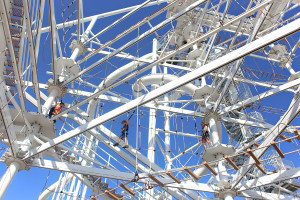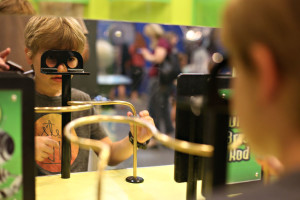Explore OK {Oklahoma City National Memorial & Museum}
I was 15 years old and walking down the hallway to my history class. The principal came on over the speaker and announced an explosion in Oklahoma City. I remember being so confused. I think everyone was at first. The normally loud halls were now quiet as we all headed to classrooms hoping for answers from our teachers. The teachers were just as confused. When President Clinton was told of the explosion, the initial news was that it was related to a gas leak. No one guessed a fellow American would purposely drive a bomb-filled truck to the front of a government building.
I remember watching the news. The entire side of a building was missing and 168 lives lost. A daycare full of children – gone. First responders flooded the streets and surrounding areas. Recovery work was called off several times as spring thunderstorms rolled through. Nothing made sense. The bombing of the Alfred P. Murrah building in Oklahoma City was the worst terrorist attack to take place on US soil prior to September 11, 2001.
It has been many years since I last visited the Oklahoma City National Memorial & Museum. As we planned with Adventure Road where we would like to visit while in OKC, the OKCNMM as on the top of my list. My kids span from 5 yrs to 12 yrs. I knew we would need to be mindful of how we talked about certain parts the story of April 19, 1995, but I also knew it was an important part of history I wanted to teach and discuss with the kids.
The Museum is interactive and covers the day of the bombing (4-19-95) and the weeks/days/months and years that followed. It is a story of how chaos transformed into hope and unity.
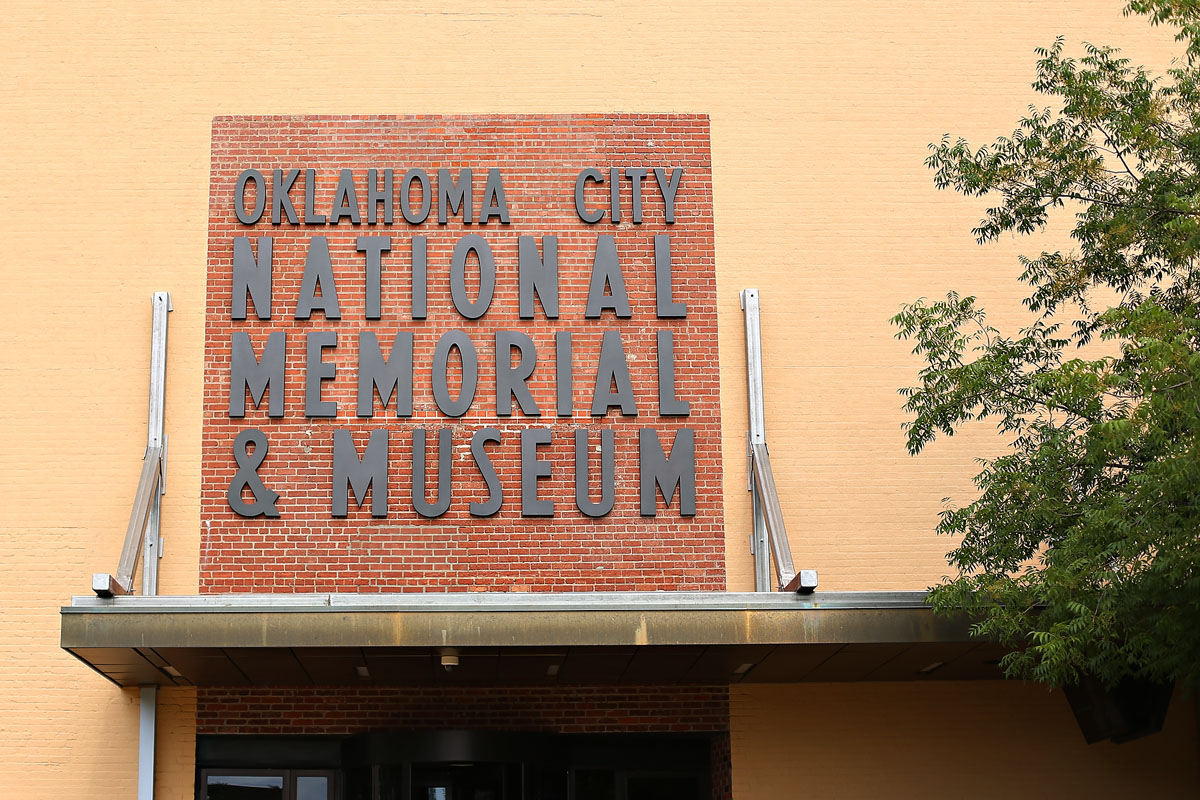 The museum tour begins with the morning of April 19 and walks chronologically through the events of the day. Early on there is one room where you sit and hear that actual explosion (it was in the background of an official Oklahoma Water Resources Board). The boys went in the room with the recording, but I skipped past that part with the girls.
The museum tour begins with the morning of April 19 and walks chronologically through the events of the day. Early on there is one room where you sit and hear that actual explosion (it was in the background of an official Oklahoma Water Resources Board). The boys went in the room with the recording, but I skipped past that part with the girls. 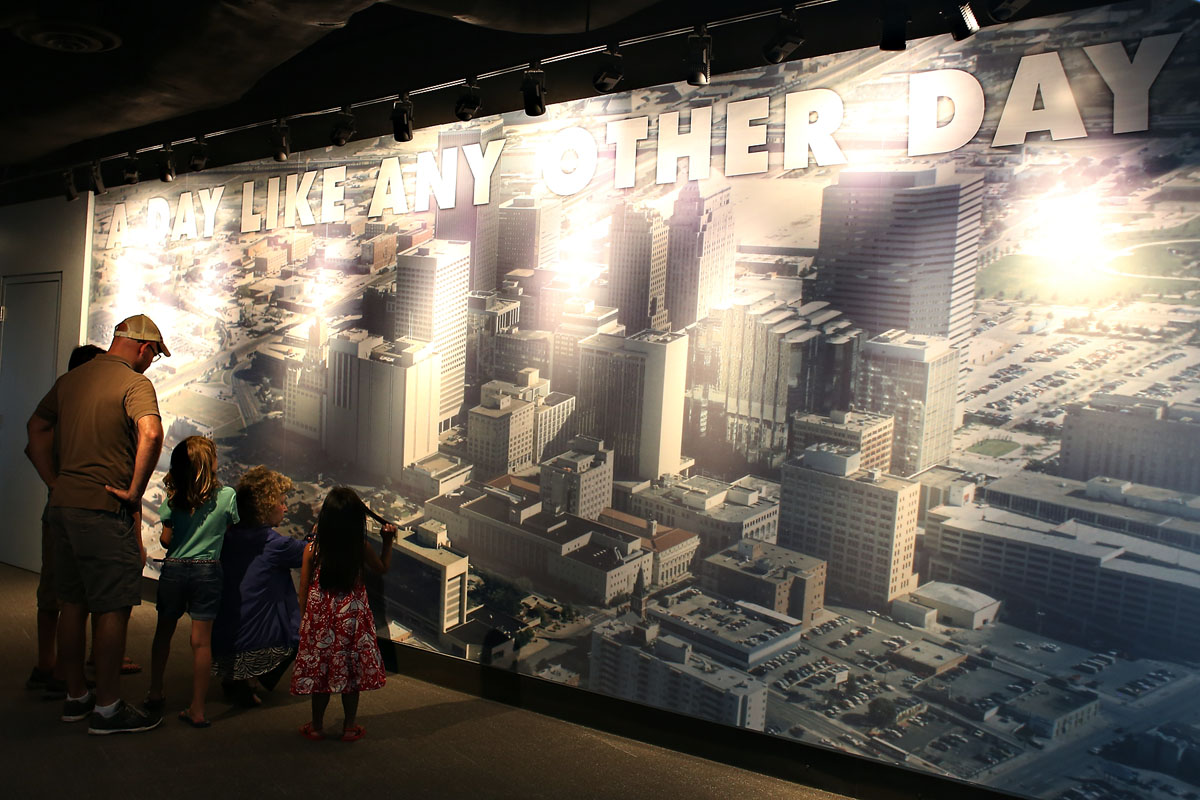 Below is an enlarged photo taken from across the street. You can see the truck that was used parked across the street. Throughout the museum there are dozens of pieces of evidence used to find answers. I appreciated the way the kids learned not only about the specific event, but discovered in detail how answers were found.
Below is an enlarged photo taken from across the street. You can see the truck that was used parked across the street. Throughout the museum there are dozens of pieces of evidence used to find answers. I appreciated the way the kids learned not only about the specific event, but discovered in detail how answers were found. 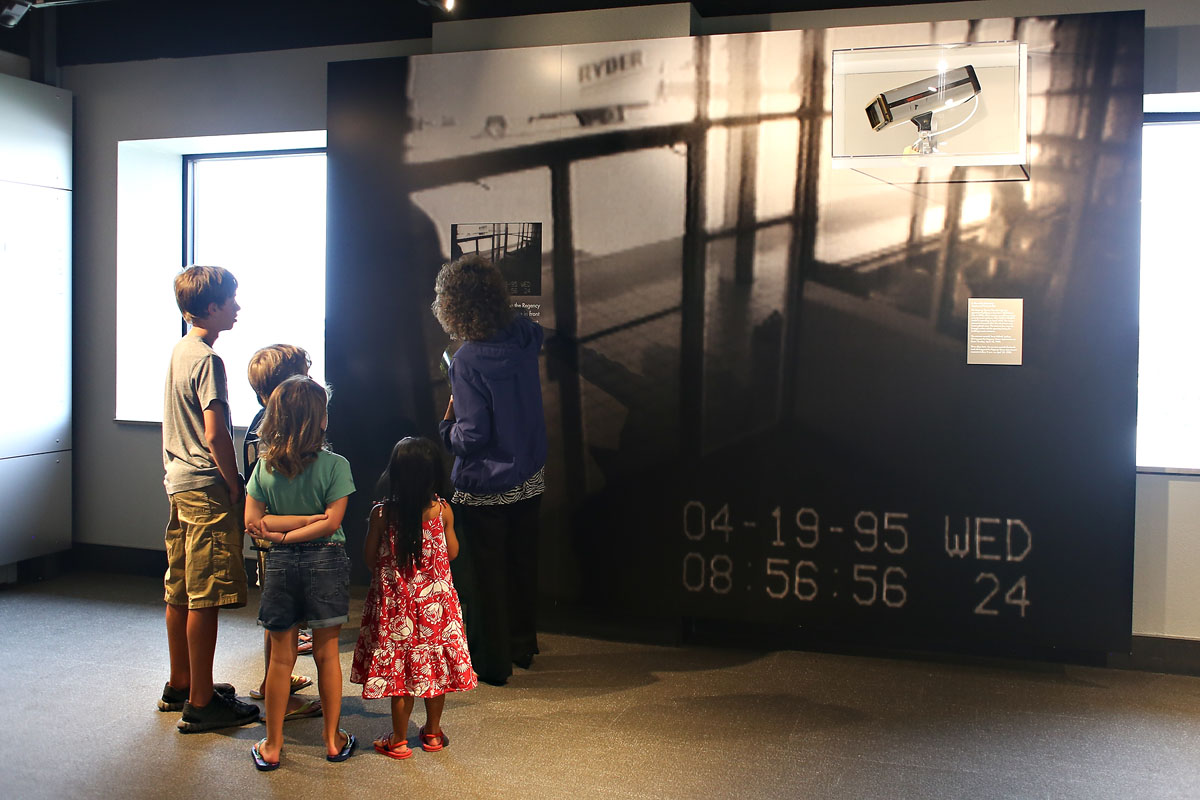
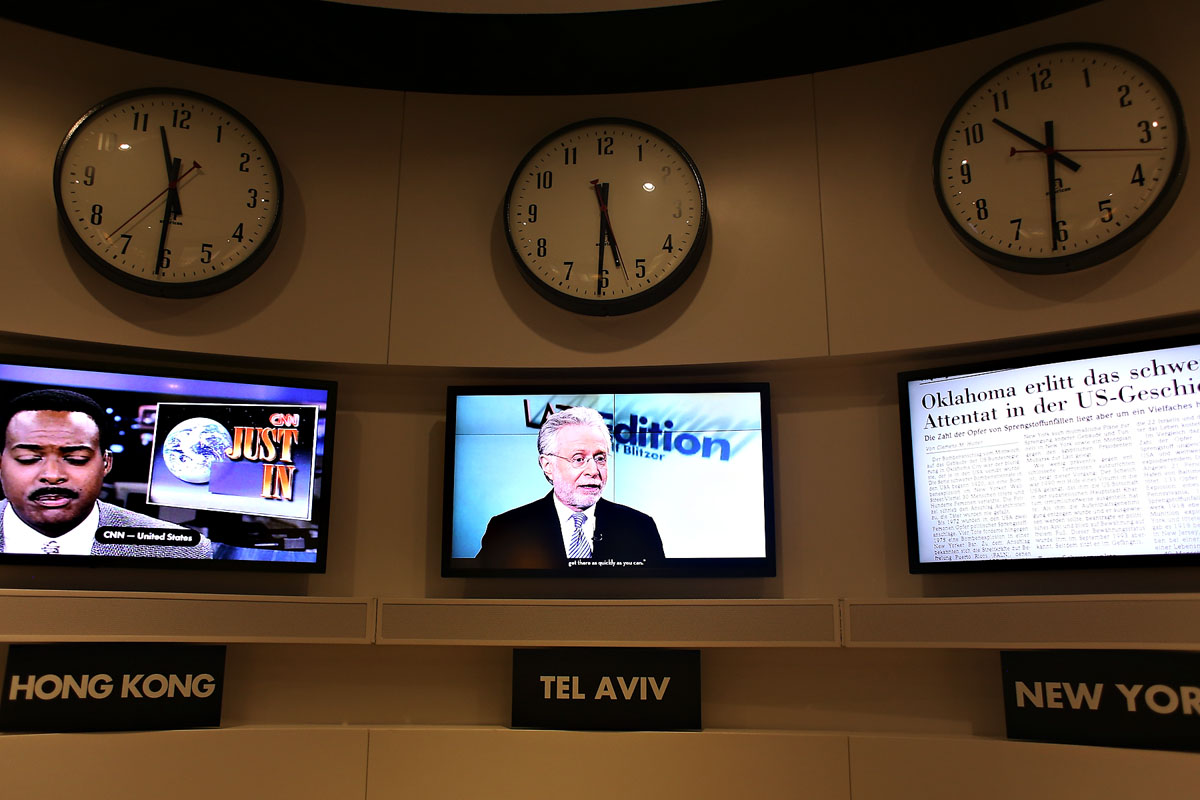
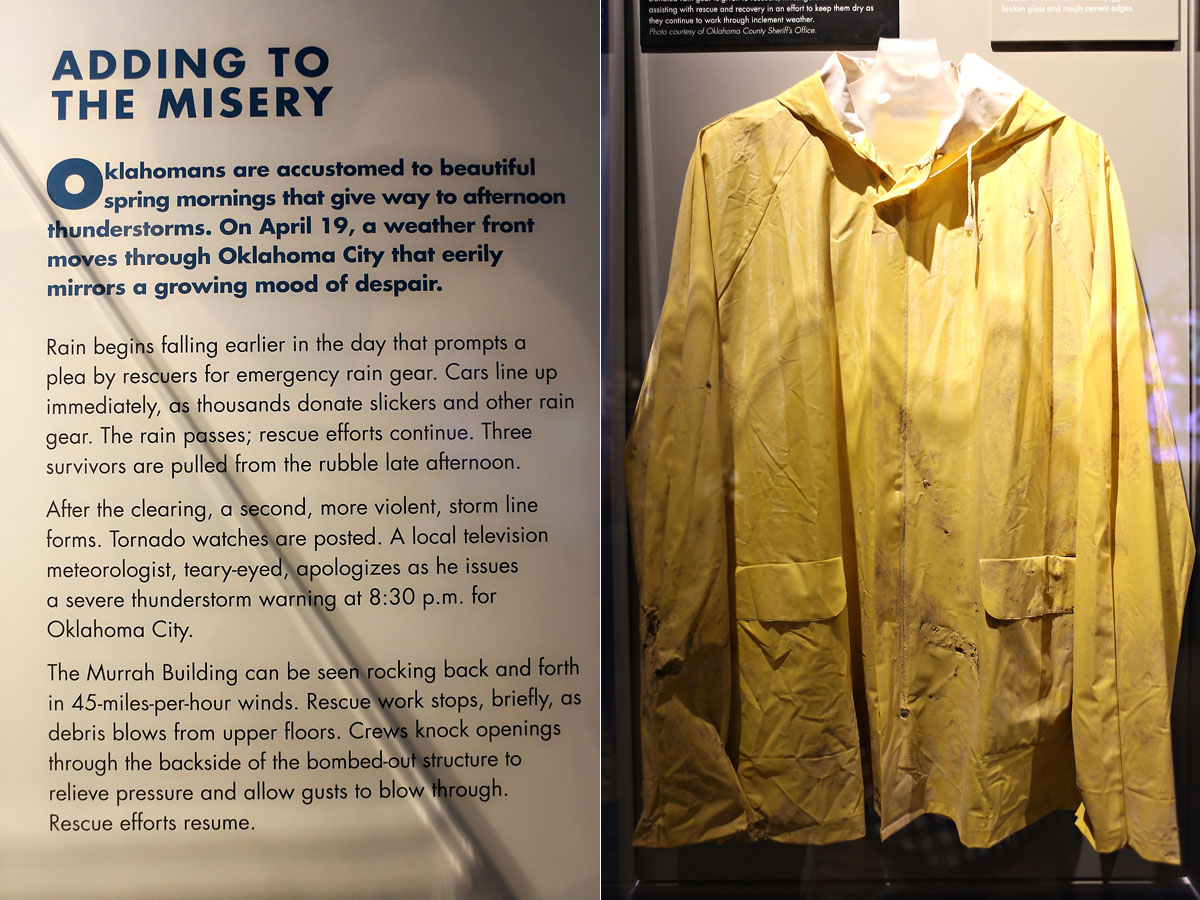
In recent years the museum integrated interactive elements. Instead of only reading signs and boards, my kids jumped on screens and interacted with the stories. The boys, especially the older 2, were hard to pull away from these elements.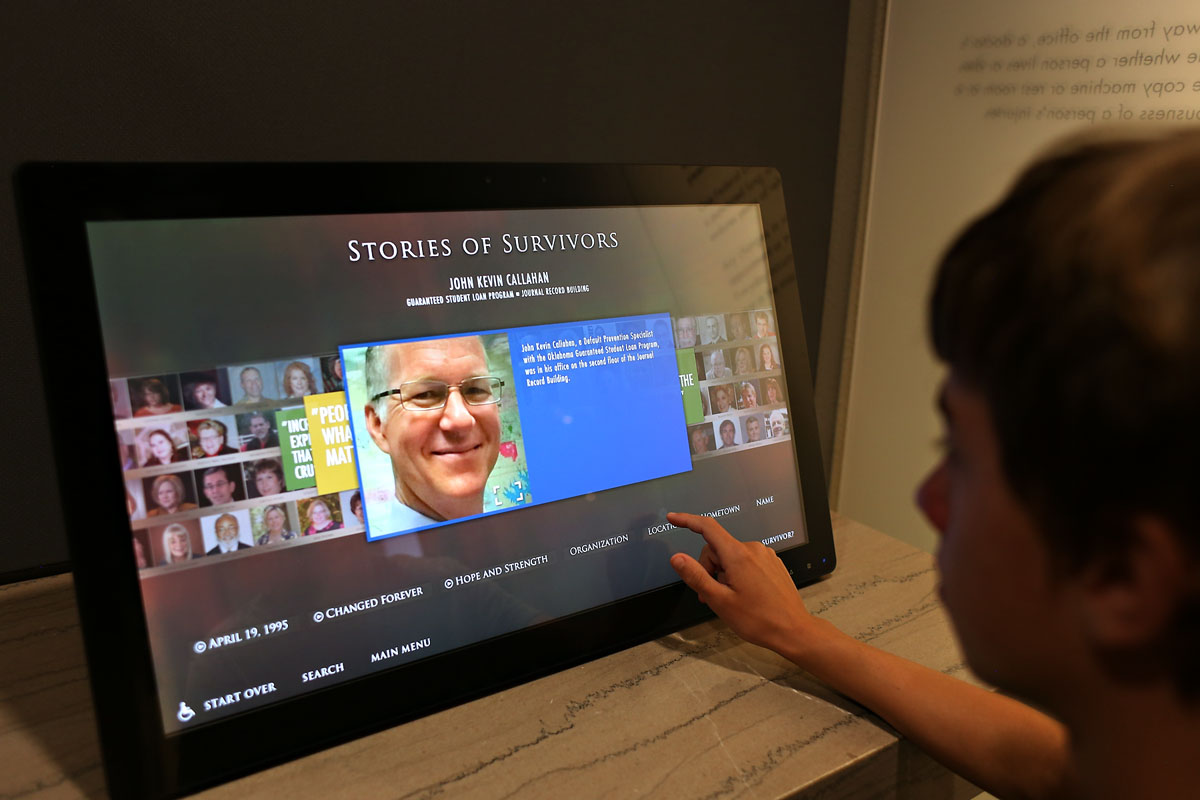
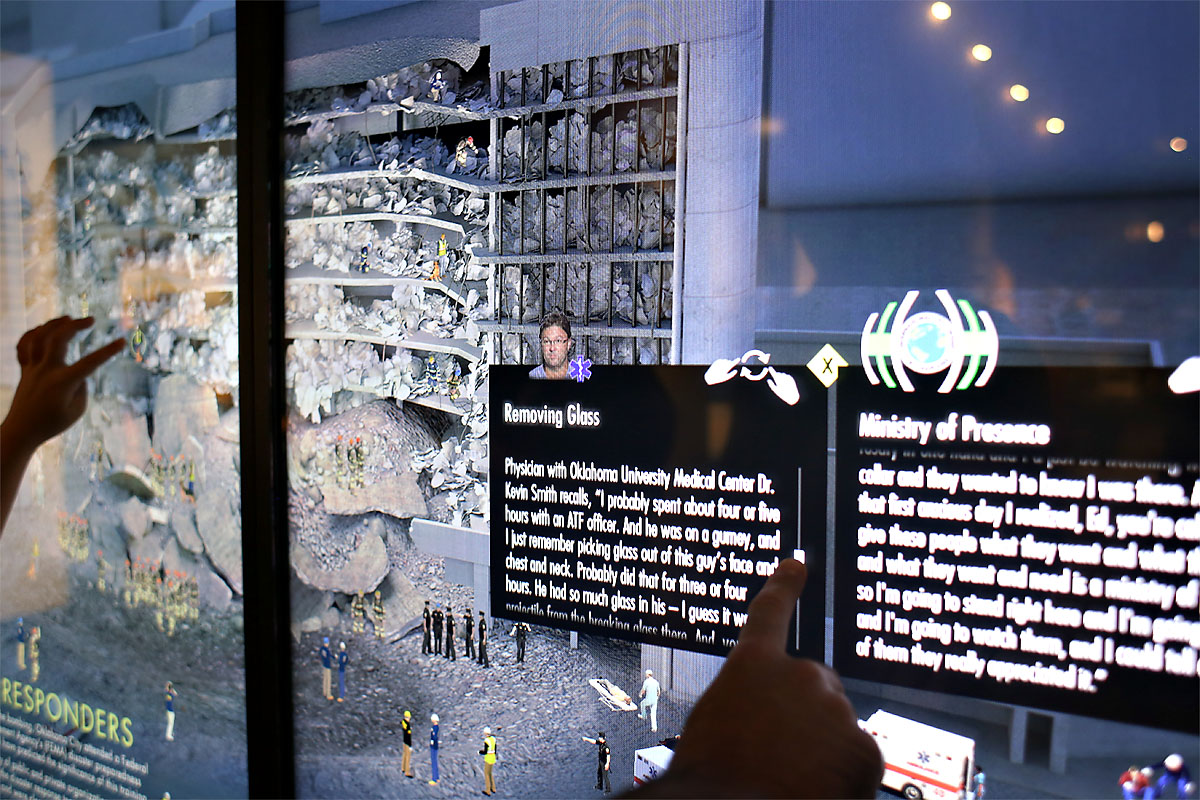
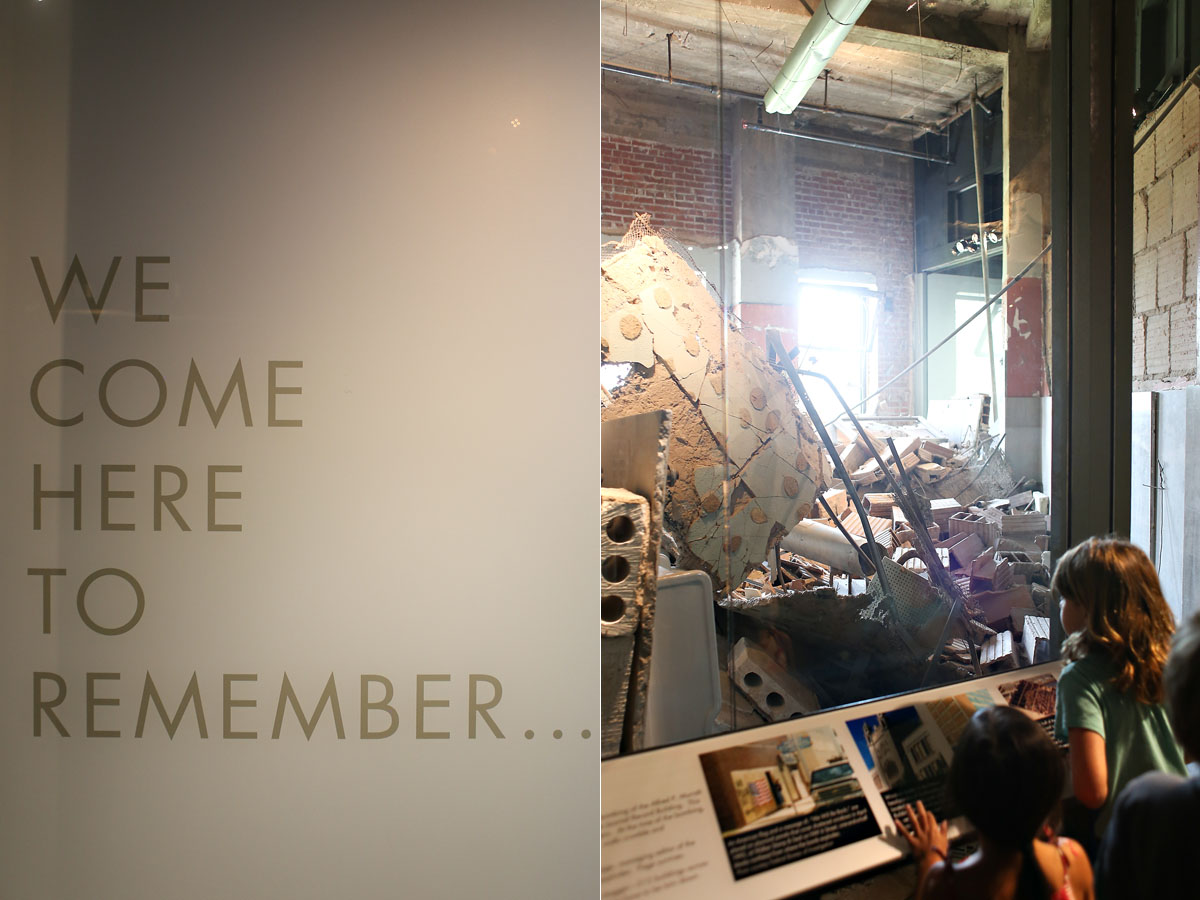 After touring the museum, we walked outside to the memorial. Several key elements create the outdoor memorial. The Reflecting Pool (where the street once was), the Field of Empty Chairs (where the building stood, symbolizing each life lost), The Survivor Tree, The Survivor Wall (the only remaining wall of the original building, inscribed with survivors’ names), The Rescuers’ Orchard, and a Children’s Area. At the east and west sides of the Reflecting Pool tower two gates. The 9:01 gate and the 9:03 gate. As you enter the memorial, you walk through the 9:01 gate (one minute before the explosion that took place at 9:02). You experience the museum and memorial and then leave through the 9:03 gate – the place where hope and healing begin.
After touring the museum, we walked outside to the memorial. Several key elements create the outdoor memorial. The Reflecting Pool (where the street once was), the Field of Empty Chairs (where the building stood, symbolizing each life lost), The Survivor Tree, The Survivor Wall (the only remaining wall of the original building, inscribed with survivors’ names), The Rescuers’ Orchard, and a Children’s Area. At the east and west sides of the Reflecting Pool tower two gates. The 9:01 gate and the 9:03 gate. As you enter the memorial, you walk through the 9:01 gate (one minute before the explosion that took place at 9:02). You experience the museum and memorial and then leave through the 9:03 gate – the place where hope and healing begin.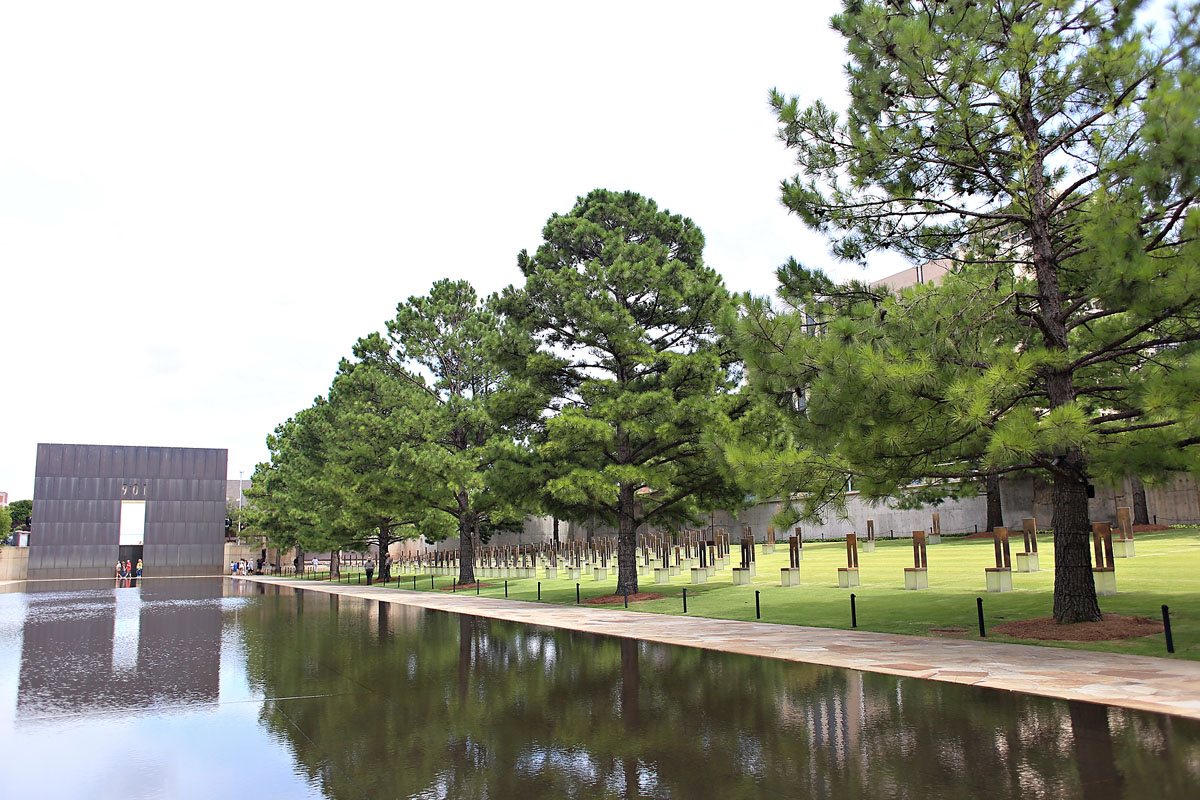
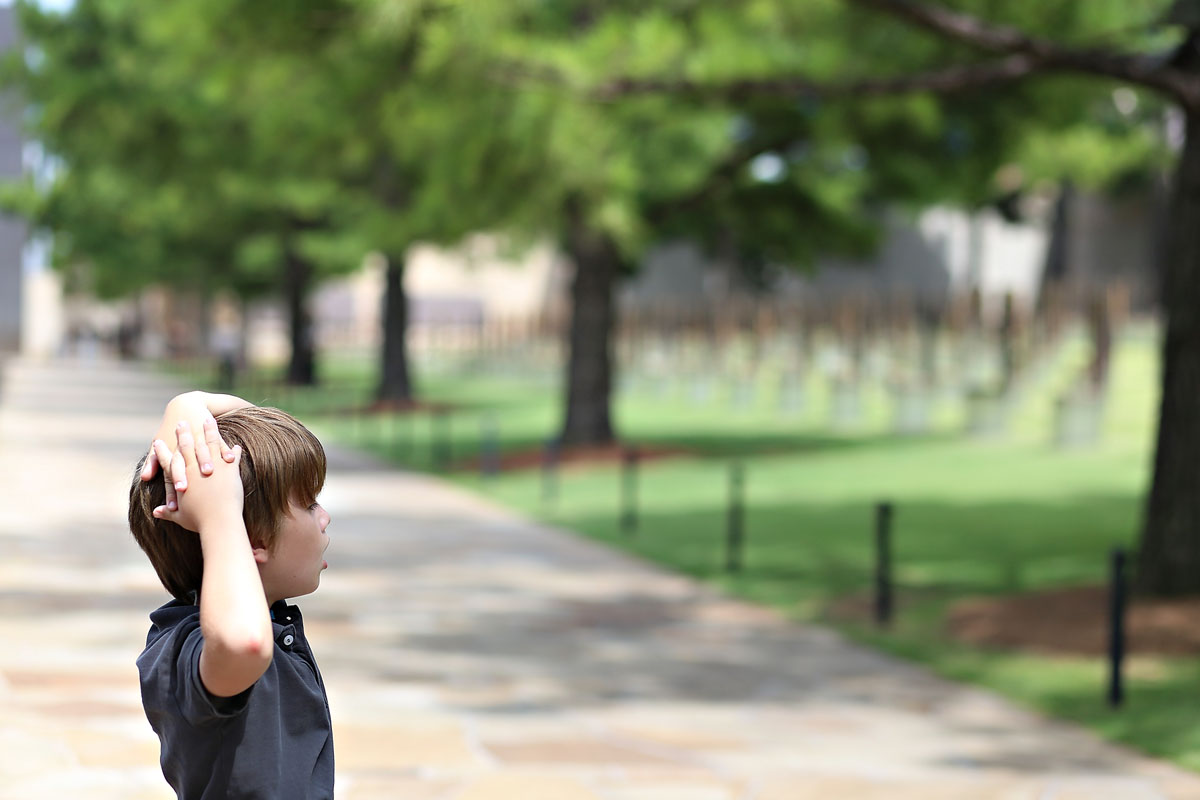 “The forces of hate and violence must not be allowed to gain their victory, not just in our society, but in our hearts. Nor must we respond to hate with more hate. This is a time for coming together, and we have seen that and been inspired by it.” Rev. Billy Graham, days after the attack.
“The forces of hate and violence must not be allowed to gain their victory, not just in our society, but in our hearts. Nor must we respond to hate with more hate. This is a time for coming together, and we have seen that and been inspired by it.” Rev. Billy Graham, days after the attack.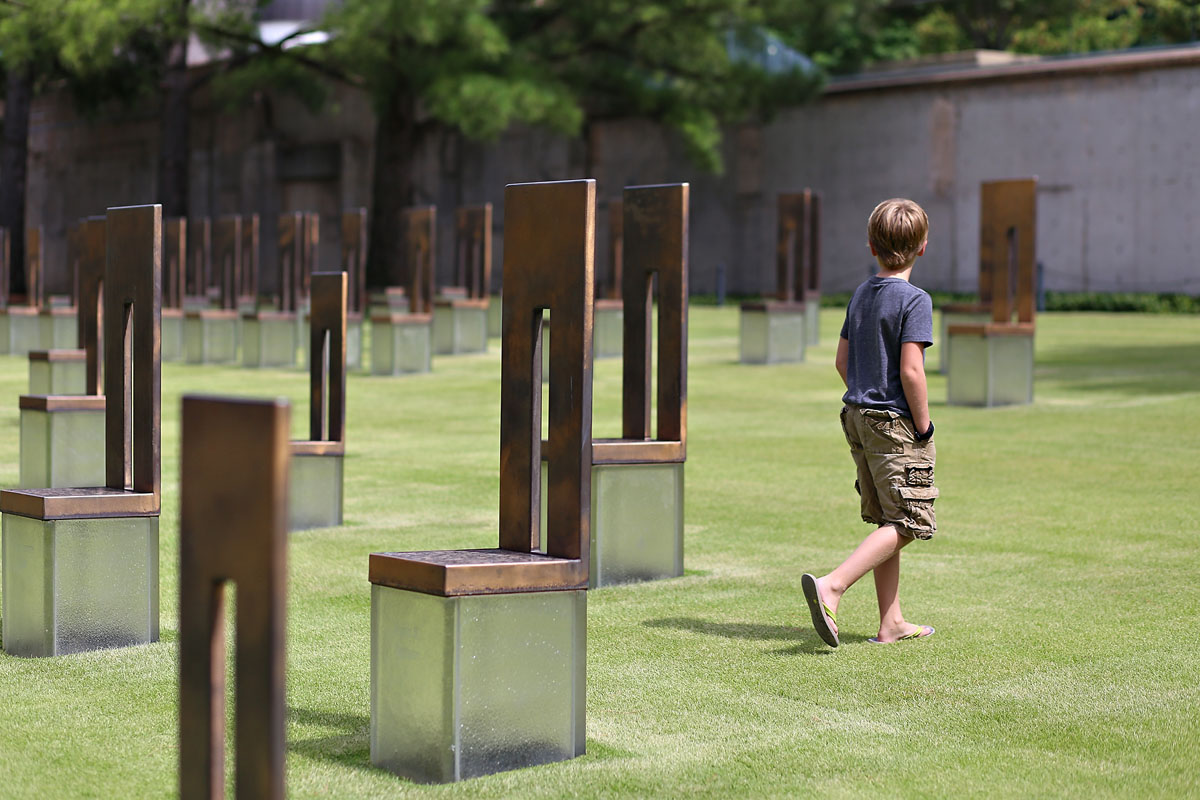
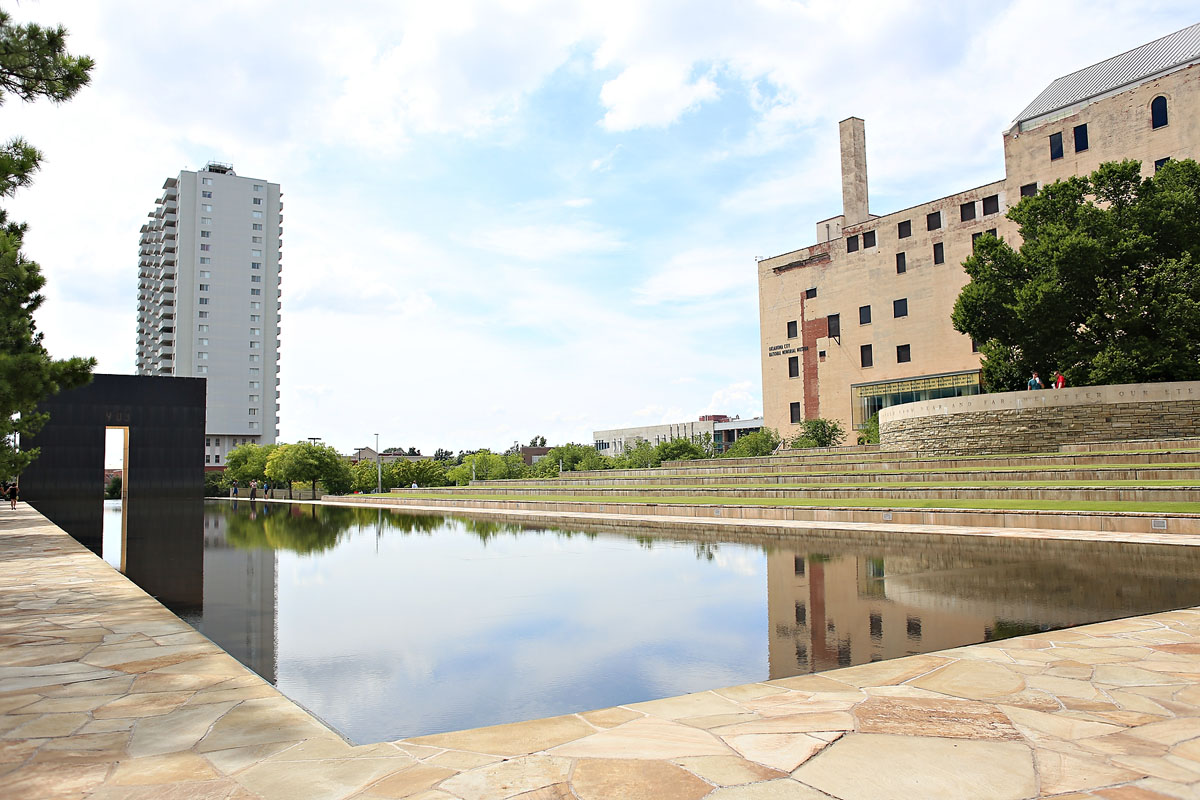
A few number facts
- 168 people killed
- 19 children killed
- 850 people injured
- 30 children orphaned
- 219 children lost at least one parent
- 300 buildings destroyed or damaged
- 462 people left homeless
- 12,384 volunteers and rescue workers assisted in rescue, recovery and support
*Source: Governor Frank Keating’s office, 1995
The Survivor Tree (pictured on right) survived the blast. Evidence was pulled from its’ branches and trunk. It now stands as a symbol of strength and witness to the events of the day. Near the tree reads, “The spirit of this city and this nation will not be defeated; our deeply rooted faith sustains us.”
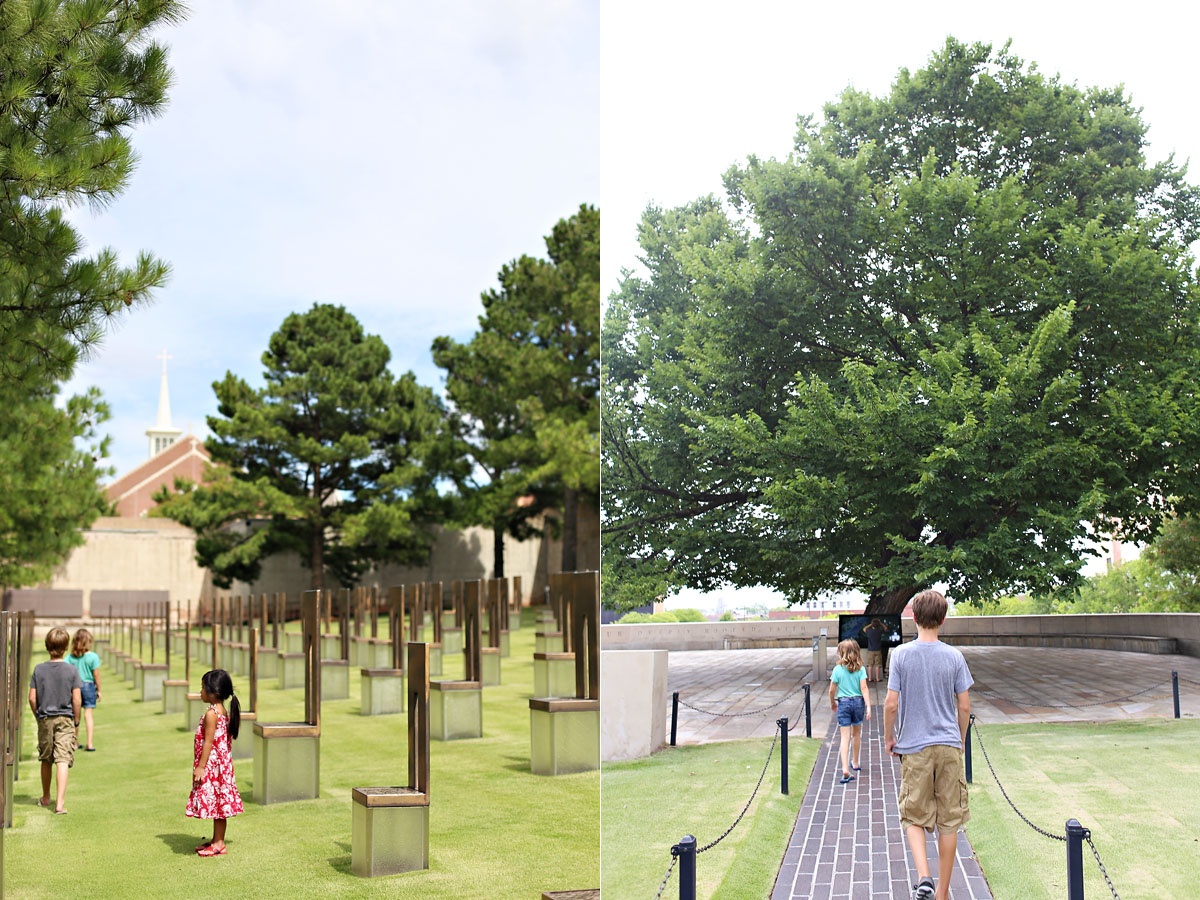 Outside the museum is a children’s area with chalkboard tiles. Children are encouraged to draw/write/express after touring the museum and memorial.
Outside the museum is a children’s area with chalkboard tiles. Children are encouraged to draw/write/express after touring the museum and memorial.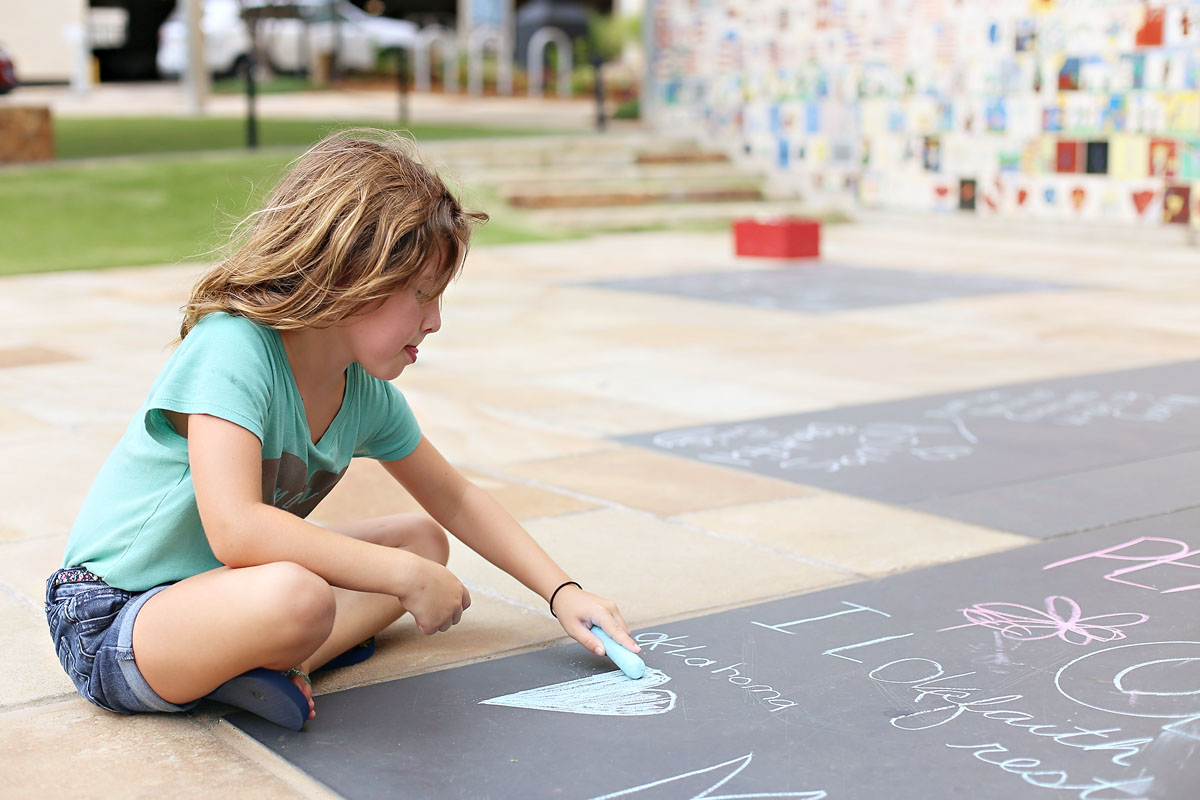
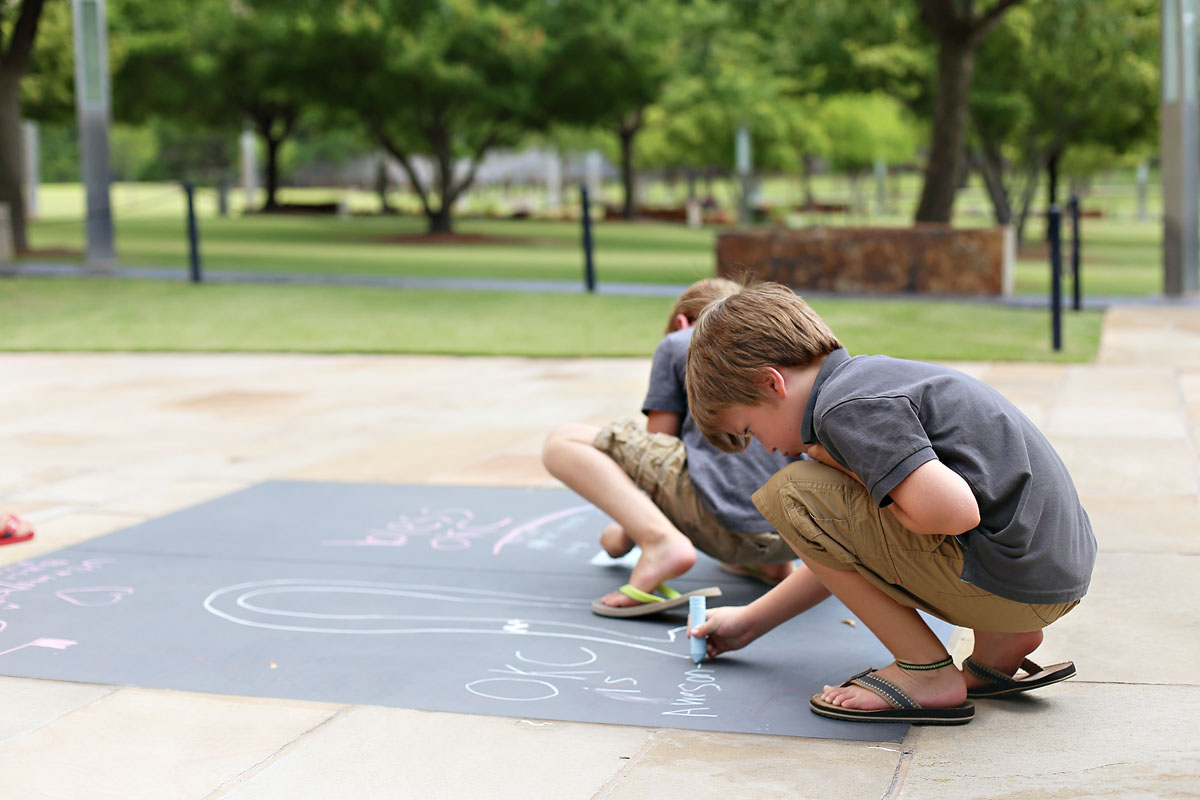
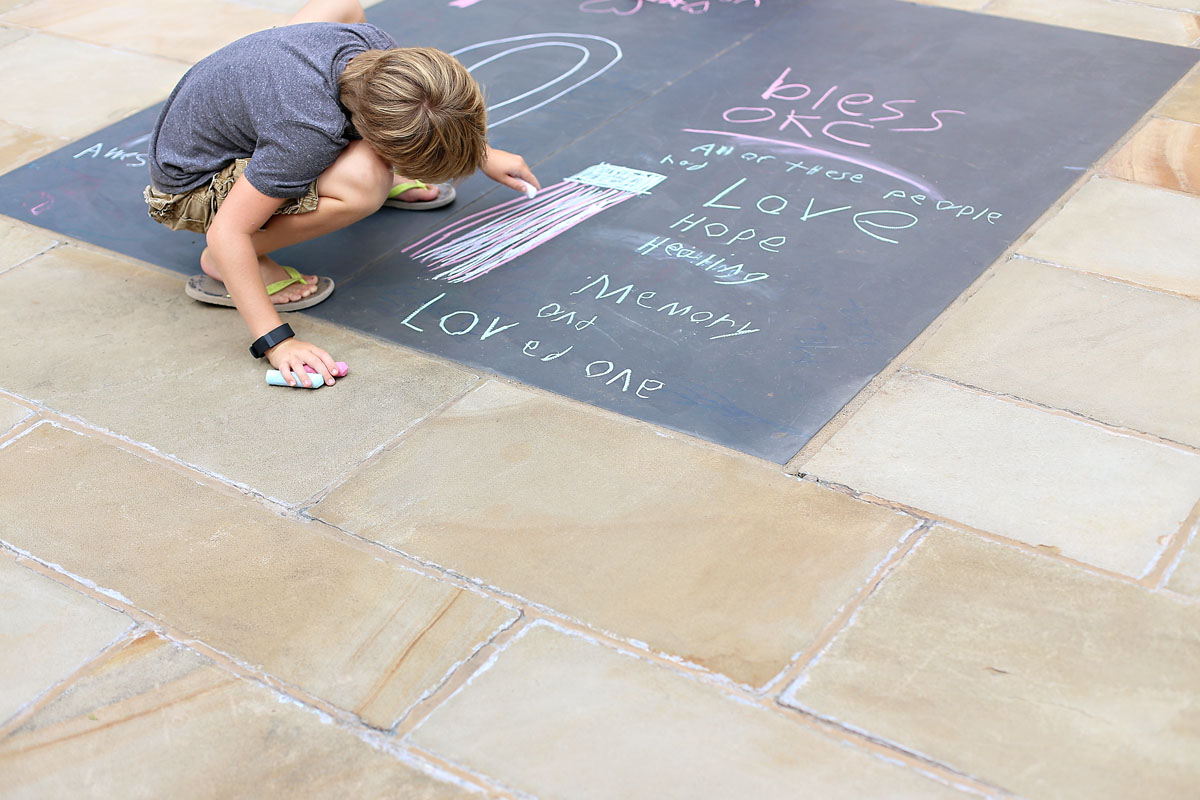 As you prepare to leave the memorial, you are encouraged to respectfully dip your hand in the Reflecting Pool and press it to the 9:03 gate…leaving your handprint and a bit of you behind.
As you prepare to leave the memorial, you are encouraged to respectfully dip your hand in the Reflecting Pool and press it to the 9:03 gate…leaving your handprint and a bit of you behind.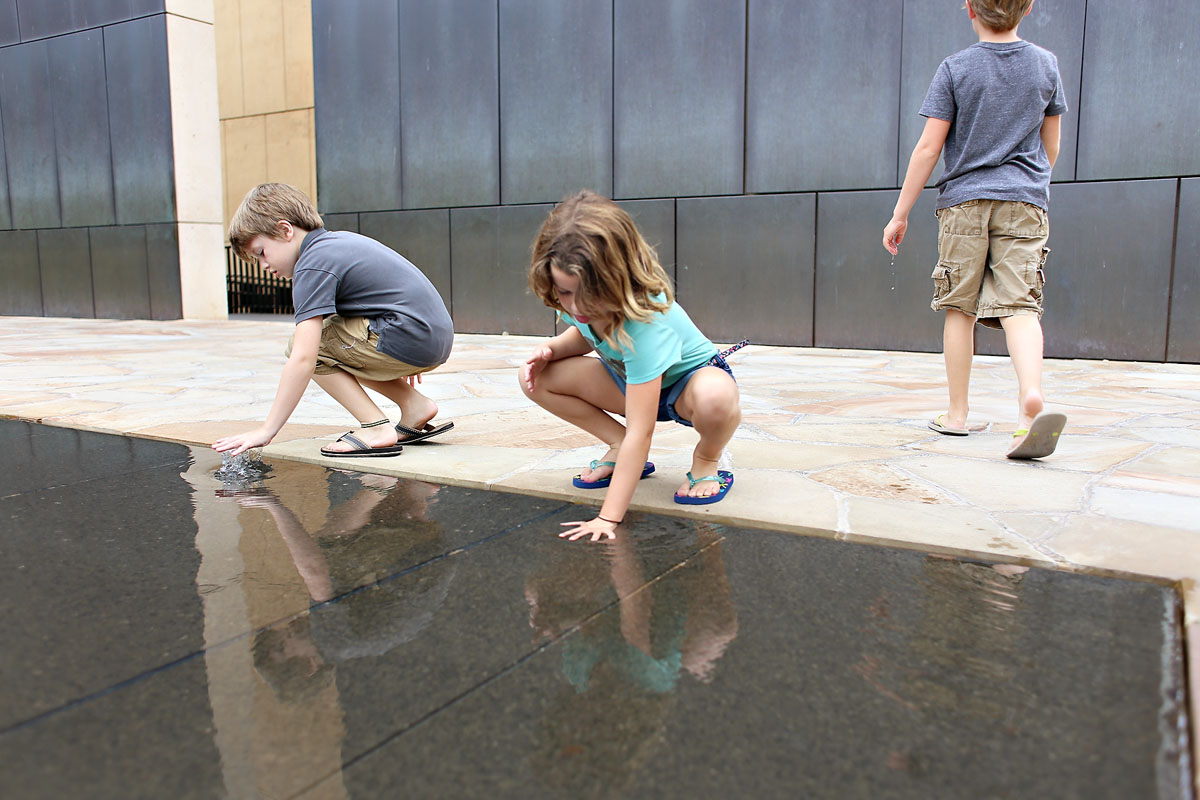
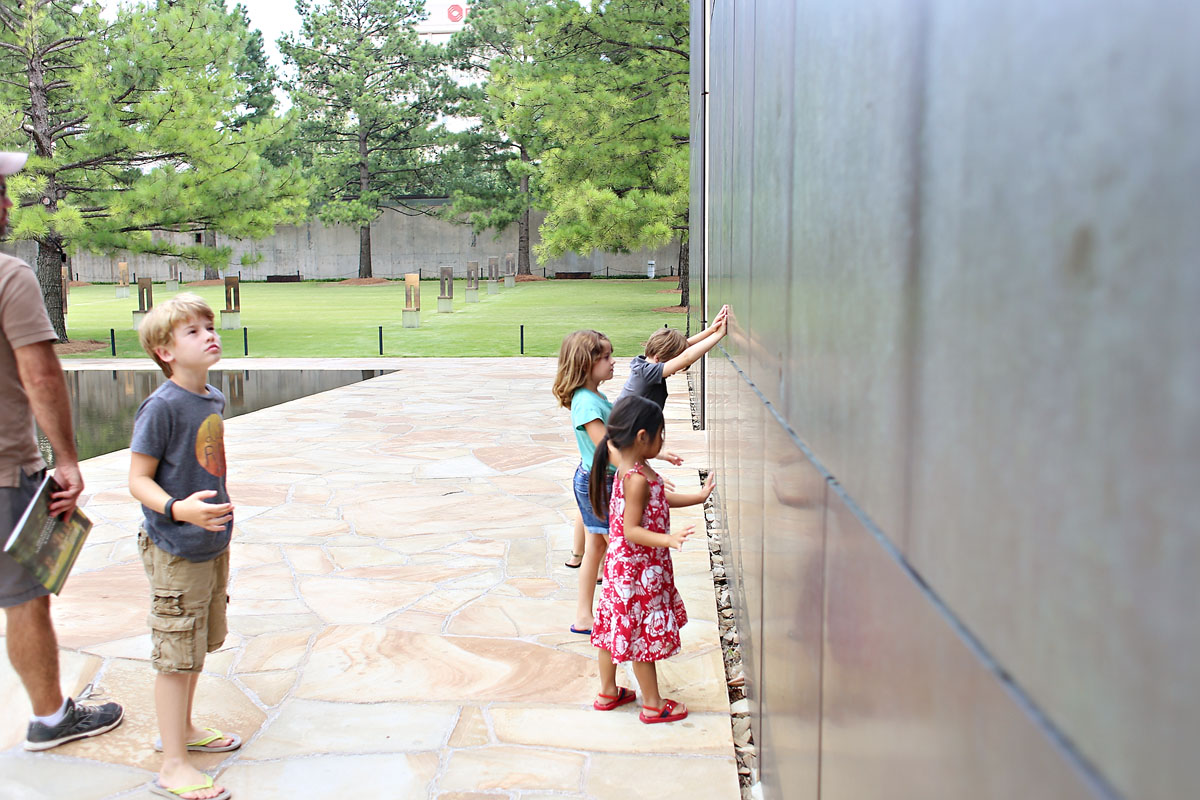
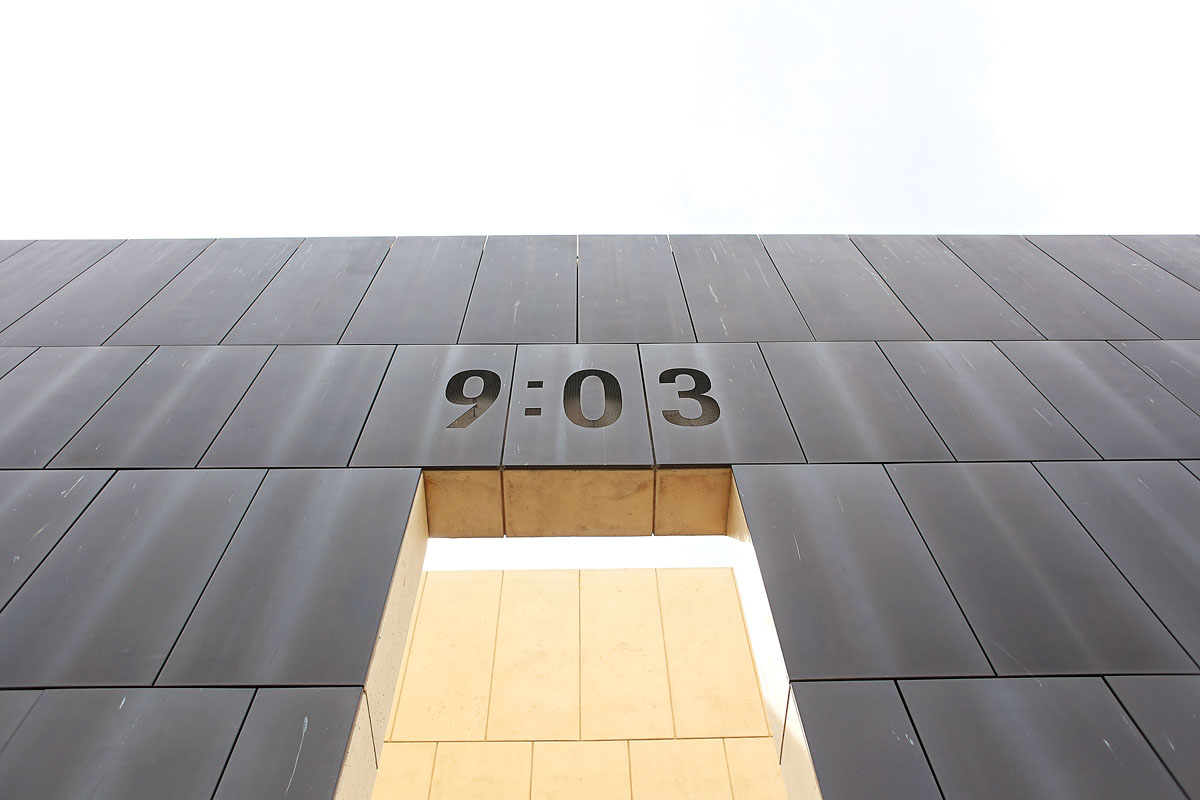
9:03. 1 minute after the blast. The moment we were all changed. The place where healing begins after the horror.
My tips:
- Talk to your kids before the visit. Give them a bit of knowledge about the event and what to expect. I made sure my kids understood we were not going for ‘fun’, but to learn, understand and show respect.
- If you have small kids, there are a few graphic photos (especially ones of the children who were killed) that you might want to avoid. I would just try to do a quick glance of each new room and then walk in a way to avoid anything you don’t want little ones to see.
- Plan time to go slow, read, interact, discuss
- Go through the museum before you tour the outside. Everything outside is much more meaningful after you have taken time to really learn and understand all the symbolism.
- Some kids process more in the days and weeks after learning about something like this. We didn’t go into much detail with our youngest. I stayed close by my 7 year old and asked/answered a lot of questions as we walked. I know my kids will ask more questions in the days to come. I think that is common for most kids. I’d just encourage you to keep the communication open and be sensitive to how your kids work through stuff like this.
- My 10 & 12 year old were at great ages for the museum. If you only have really little ones, I might wait until they are ready to understand and learn from museum and memorial. If you have tweens/teens the very last room promotes great discussion that helps them implement what they learn. Take advantage of spending time in the last room (with the interactive quizzes)
The outdoor memorial is open 365 days a year, 24 hours a day and charges no admission. The Museum is open Mon-Sat 9am-6pm with paid admission.
“We come here to remember those who where killed,
those who survived and those changed forever.
May all who leave here know the impact of violence.
May this memorial offer comfort,
strength, peace, hope and serenity.”
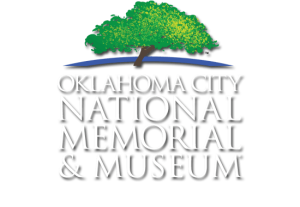 Website | Facebook | Twitter | Instagram | YouTube
Website | Facebook | Twitter | Instagram | YouTube

